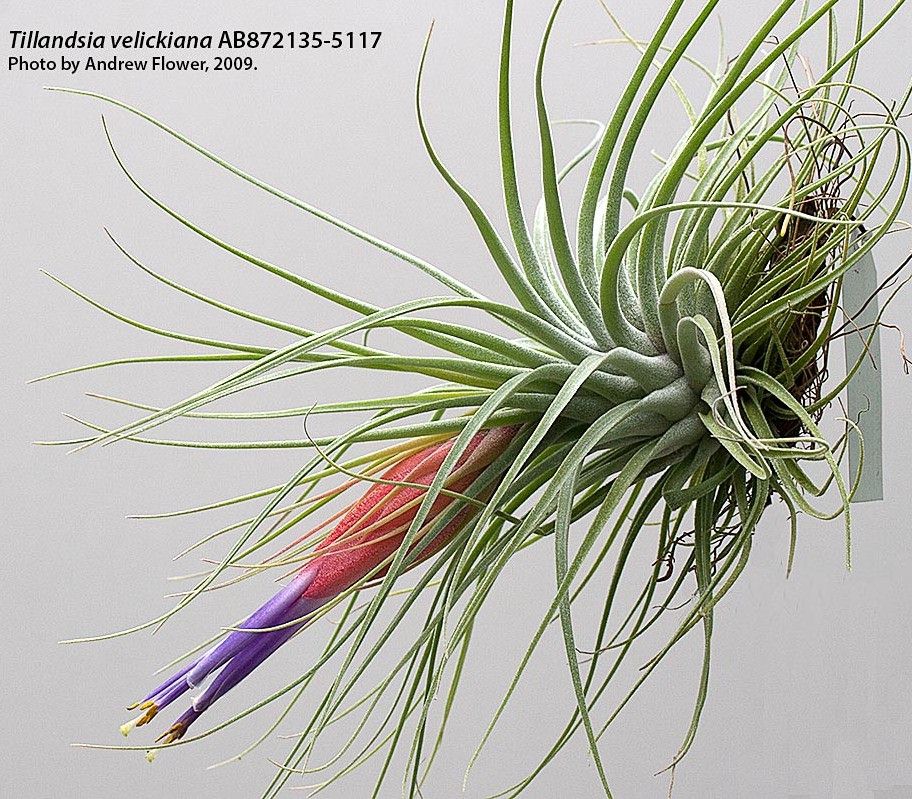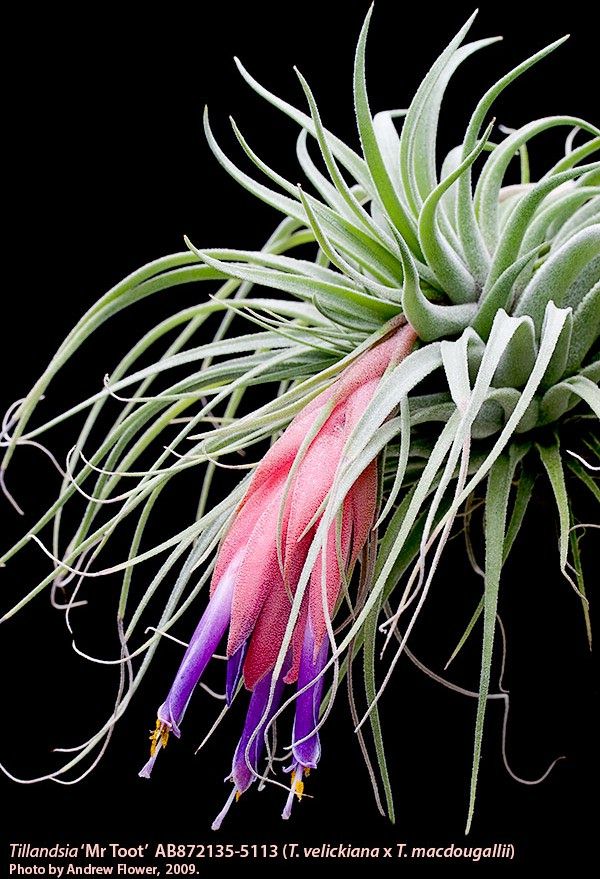Tillandsia Mr Toot
Click thumbnails for full size, scaled to a new window.
Tillandsia Mr Toot
Mature rosette to 10cm. diameter x 20cm. high. Arching ,narrow grey-green leaves,scurfed on the obverse and dense with white trichomes on the reverse. Pendant/arching spike of scurfed shell pink scape bracts and exserted violet flowers with petals thinly-edged white. Named after the breeder's family pet dog.
velickiana x macdougallii, Andrew Flower 2000.

 Andrew Flower ... "T. velickiana x macdougallii. Cross made November 2000, first flowerings 2009.
Andrew Flower ... "T. velickiana x macdougallii. Cross made November 2000, first flowerings 2009.
This was one of those infuriating crosses where different ovaries got pollinated by different fathers; I have never got single velickiana to self-pollinate - however - so far as I can tell the species that do not normally self have a mechanism whereby they actively produce a substance that inhibits the stigma from accepting its own pollen but if foreign pollen lands on the stigma then the production of the inhibitary substance may be switched off, thereby allowing own pollen to be accepted.
There have been a number of instances here where crosses have some ovaries pollinated by a foreign species and some pollinated by their own pollen. In this case, I got some Mr Toots and some T. velickiana seedlings: attached are pics of AB872135-5113 (Mr Toot = velickiana x macdougallii) and AB872135-5117 (not Mr Toot = T. velickiana). Commercially, this has meant I can only sell offsets of individuals that have flowered and known to be good Toots! Just to confuse the issue further, there are also some not-quite Toots appearing as well - which leads me to question the purity of mother velickiana AB173 which was imported here from a USA nursery in 1990.
Incidentally, if anyone wonders how the seedling numbering system works: The 6 numbers with "AB" prefix is the batch number for seedlings from a single seed pod and the 4 number suffix refers to an individual seedling from that batch. Suffixes are only applied to seedlings that need to be identified individually for some reason."
Derek Butcher ... "You do have fun with your hybridising and always questioning the results as a good hybridist should. Whenever I see T. velickiana I shudder. Ever since 1974 when Smith messed us up when he introduced the new species that had come via a US nurseryman from Guatemala. Subsequent collections have shown slight differences. Eric wants to treat it as a blue/purple petal form of T. matudae and I have said when he bites the bullet I will be working on Cultivar names!"
Updated 28/05/21

